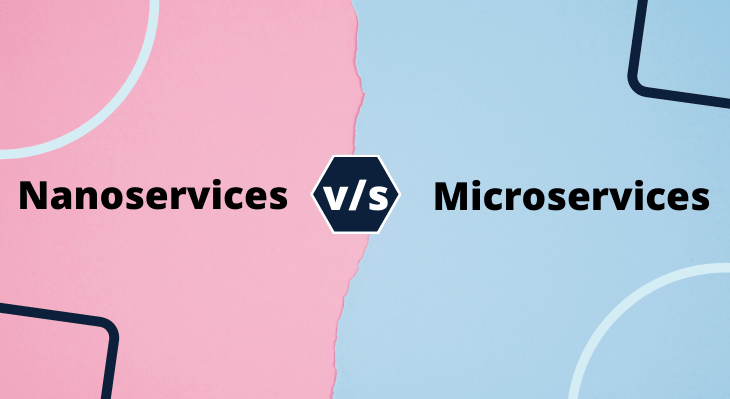Every day in the world of technology, we can see the establishment of new theories and trends building and maintaining even a new business.
When we talk about building software architecture focused on communication between different services. It is common to end up placing a lot of responsibility and intelligence in the communication mechanism itself.
In this blog post, we’ll explore the difference between nanoservices and microservices on the basis of their architecture and benefits.
While the two names seem to be related but they aren’t the same. Microservice is an approach designed to overcome the drawbacks of traditional monolithic architecture.
Microservices, in a way, was the next step in the evolution of SOA. Similarly, nanoservices can be considered as the evolved form of microservices architecture.
Considered as an anti-pattern, components of nanoservices are too fine-grained as compared to microservices. There’s no need to duplicate code in nanoservices to be deployed.
Once nanoservices are deployed, they give an additional level of flexibility as they allow you to chain together different services.
A nanoservice by structure is intended to do one task at a time only, and present it as a single API endpoint. With nanoservices, each command is likely to be separate but on the other hand, microservices often have multiple commands.
Listed below are Some of the Benefits of Using Nanoservices in your Projects:
- A nanoservice can have its own security protocol
- Flexibility to use different services
- Easy to deploy
- Nanoservice can be created according to its own schedule
- Nanoservices can be clustered together to form a usable application
Microservices tend to manifest particular implementation details that were never clearly explained in the SOA architecture.
Nanoservices as compared to microservices have a narrower reach and are usually at the functional level.
Also Read: From SOA to Microservices: Know the Architectural Evolution
Due to its characteristics, microservice architecture has become quite popular over the years. It is an approach to application development in which a large application is made as a set of modular services.
Every module upholds a particular business objective and uses a well-defined interface to communicate with other sets of services. In other words, each microservice is autonomous and does not share a data layer.
In this model, the parts of the system are all dependent on each other. They are designed to work together all the time. If the developer needs to make changes to only a few parts of the system, he will necessarily need to update the system as a whole.
Listed below are Some of the Benefits of Using Microservices in your Projects:
- Works well with containers
- Redundancy to remain available
- Requires less production time
- Makes continuous and automated deployment possible
- Easy to integrate with third-party services
Concluding Words
Nanoservices are more focused, have narrower a reach and overcome the drawbacks of microservices but they also have their own unique set of issues and challenges.
Nanoservices have recently come into the picture, and are just not ready to lead their army into the battle.
You may also like to read: MVC vs. Microservices: Understanding their Architecture

